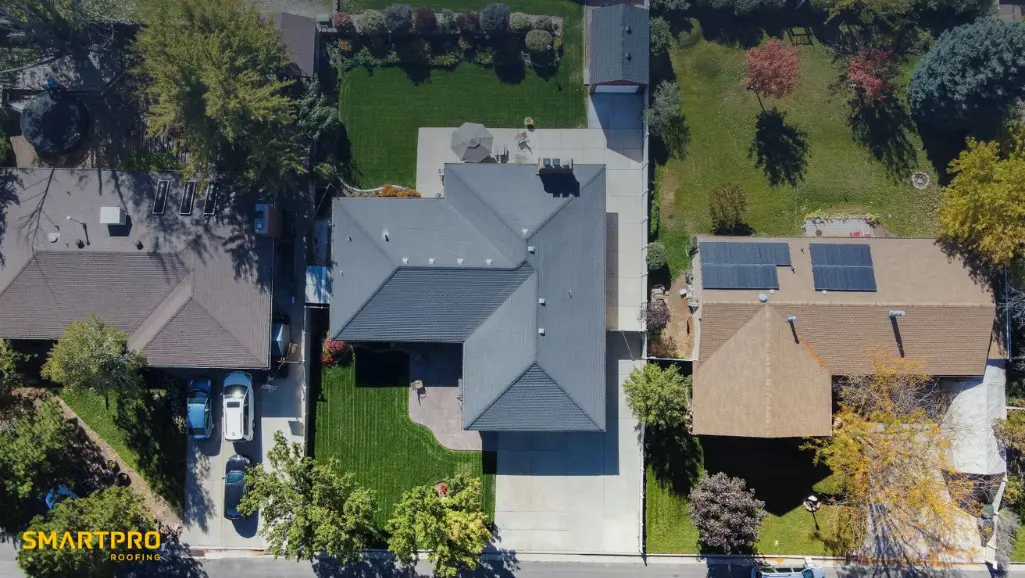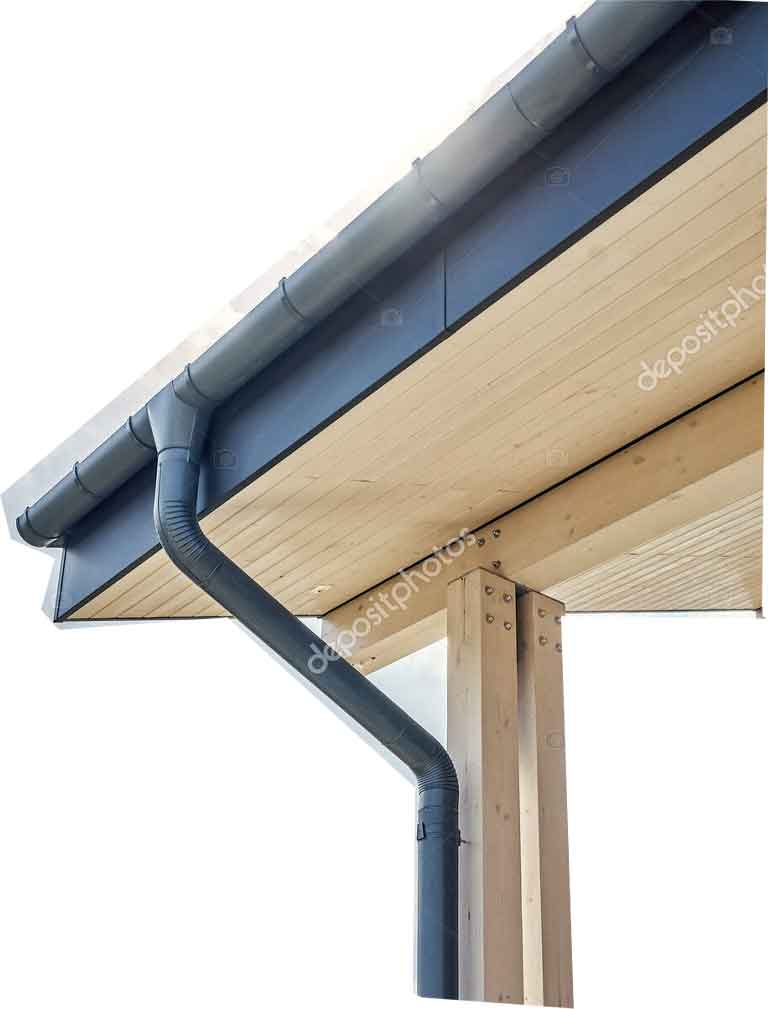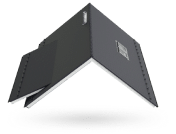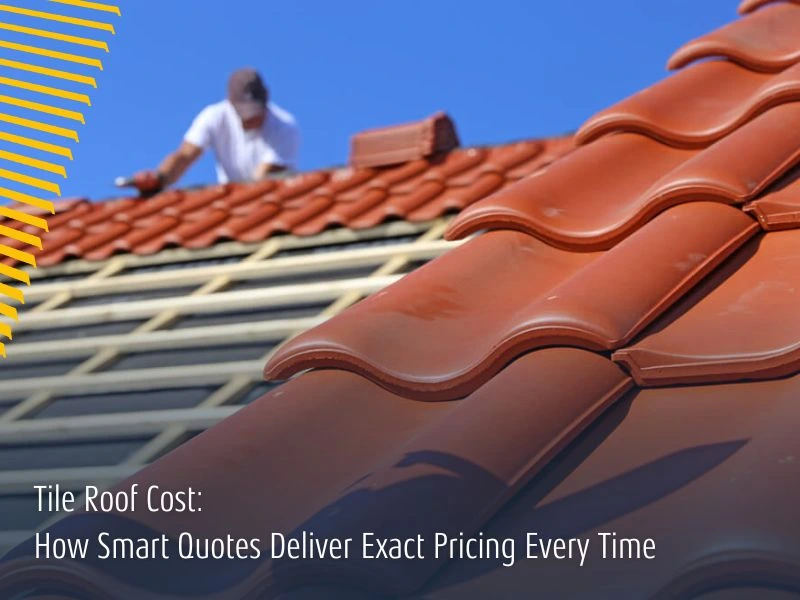If you’re a homeowner looking to improve your home’s comfort while saving money on energy bills, your roof might be the best place to start. An energy-efficient roof doesn’t just sit there keeping the rain out, it actively helps you reduce heat, lower your energy consumption, and extend the lifespan of your home.
This guide will walk you through types of energy-efficient roofing, from cool roofs to metal roofs and green roofs, explaining how each roofing option works, how to choose the right roof material, and what kind of energy savings you can expect. By the end, you’ll know how to achieve an energy-efficient home that keeps you cool in summer, warm in winter, and happy every month when your energy bills arrive.
Outline
- What Makes a Roof Energy Efficient?
- Understanding Cool Roof Technology
- Metal Roofs: Durable and Reflective
- Tile Roofing and Thermal Performance
- Asphalt Shingle Options for Energy Efficiency
- Green Roof Systems for Insulation and Stormwater Management
- The Role of Solar Shingles and Solar Energy
- How Roof Coatings Can Improve an Existing Roof’s Energy Efficiency
- Choosing a Roofing Material for Your Climate and Budget
- Hiring the Right Roofing Contractor for Energy-Efficient Roof Installation
1. What Makes a Roof Energy Efficient?
An energy-efficient roof is designed to control heat transfer, keeping your home cooler in summer and warmer in winter. The secret lies in materials with high solar reflectance and thermal emittance. This combination allows a roof to bounce back sunlight and release absorbed heat.
When we ask “What makes a roof energy efficient?”, the answer often comes down to a few factors: the roof material, its color, coatings, and the roofing system beneath it. For example, a roof is designed to reflect sunlight can significantly reduce cooling costs by limiting the amount of heat absorbed into the home.
The Department of Energy recommends choosing roofing products that meet Energy Star or Cool Roof Rating Council standards. These certifications guarantee that your roofing materials for energy efficiency have been tested to improve overall energy performance.
2. Understanding Cool Roof Technology

A cool roof uses reflective surfaces or cool roofing products to lower the roof’s energy efficiency impact on your home. By minimizing heat absorption, a cool roof can lead to lower energy bills and energy savings during the hottest months.
There are several types of energy-efficient roofing within the cool roof category, from reflective roof shingles to cool roof coating systems applied directly to your existing roof. Even traditional asphalt shingles can be upgraded with light-colored granules to improve solar reflectance.
When properly installed, cool roofs can help save energy, extend the roofing system lifespan, and enhance energy efficiency without sacrificing durability or appearance.
3. Metal Roofs: Durable and Reflective
A metal roof is a favorite among many homeowners seeking energy-efficient materials. Why? Metal roofs are made with surfaces that naturally reflect sunlight, reducing energy use and heat gain. Plus, metal roofing is also known for its long lifespan, making it a sustainable roofing option.
When paired with cool roof coatings, a metal roof can improve energy performance dramatically. Light-colored or painted metal roofs can reduce heat absorption, leading to measurable energy savings.
Metal roofing is also recyclable, meaning you can protect your home’s energy efficiency while minimizing your environmental footprint.
4. Tile Roofing and Thermal Performance
Tile roofing, whether clay, concrete, or composite, offers impressive energy efficiency benefits. The curved design allows airflow under the roof material, naturally cooling your home. This roof type can improve energy efficiency and reduce heat transfer without additional coatings.
Tile roofing is often used in hot climates because it can withstand high energy sunlight without significant wear. By selecting tile roofing in lighter shades, you enhance the roof’s energy efficiency even further.
For homeowners in warm regions, tile roofing may be the best roof for combining longevity with energy performance.
5. Asphalt Shingle Options for Energy Efficiency

While traditional roofing materials like asphalt shingle are not always considered the most energy-friendly, new technologies have made asphalt shingle roofs a valid energy-efficient roofing material.
Manufacturers now produce energy-efficient asphalt shingles with improved solar reflectance. These roof shingles can save on energy bills and improve overall energy performance without replacing your existing roof entirely.
In regions with high energy demands for air conditioning, upgrading to reflective asphalt shingles can be a cost-effective step toward lower energy consumption.
6. Green Roof Systems for Insulation and Stormwater Management
A green roof, covered with vegetation, offers unmatched insulation and environmental benefits. Besides improving a roof’s energy efficiency, a green roof reduces stormwater runoff, improves air quality, and extends the roofing system lifespan.
By providing natural insulation, a green roof helps reduce heat inside your home, lowering energy costs and energy usage year-round.
For homeowners seeking both sustainability and comfort, a green roof might be the best roofing materials for energy savings and eco-friendly design.
7. The Role of Solar Shingles and Solar Energy
Solar shingles combine the benefits of a roof with solar energy generation. These systems replace conventional roof material with photovoltaic cells that generate electricity, directly offsetting your energy bills.
An energy-efficient roof can help by producing energy while reducing heat absorption, especially if combined with cool roof technology. Solar shingles are ideal for homeowners wanting to save energy and money over the long term.
The best roof in this category often depends on your location, sun exposure, and roof type.
8. How Roof Coatings Can Improve an Existing Roof’s Energy Efficiency
You don’t always need a new roof to see an improvement in your roof energy efficiency. Specialized roof coatings, including reflective and cool roof coating options, can make an existing roof more energy efficient without a full roof replacement.
These coatings work on various roof types, from metal roofs to asphalt shingles. By improving solar reflectance, you can reduce cooling costs and lower energy usage in summer.
A professional roofing contractor can help determine which roof coatings are right for your climate and roofing system.
9. Choosing a Roofing Material for Your Climate and Budget

When choosing a roofing material, consider the energy-efficient options that best match your climate. In hot, sunny areas, cool roofs and metal roofs offer maximum energy savings. In cooler climates, roofing materials for energy efficiency might focus more on insulation than reflectivity.
Many energy-efficient roofing products are available today, from green roofs to energy-efficient asphalt shingles. The material you choose affects your roof’s energy efficiency and long-term energy costs.
Consulting with a roofing contractor ensures that the roof type you select matches your energy goals and roof design.
10. Hiring the Right Roofing Contractor for Energy-Efficient Roof Installation
An energy-efficient roofing system is only as good as its installation. Working with an expert roofing contractor ensures your roof is properly sealed, ventilated, and aligned for optimal performance.
Installing an energy-efficient roof can be a significant investment, but energy-efficient roof helps you save on energy bills and improve comfort. Choose a professional familiar with energy-efficient roofing standards, including Cool Roof Rating Council and Energy Star guidelines.
In many cases, white is the most energy-efficient color for a roof, but your contractor can recommend shades and roofing products that balance aesthetics with performance.
Key Takeaways:
- An energy-efficient roof can reduce cooling costs, lower energy bills, and improve comfort.
- Cool roofs, metal roofs, tile roofing, and green roofs each offer unique benefits.
- Reflective roof coatings can upgrade an existing roof without a full roof replacement.
- Solar shingles combine energy generation with roofing performance.
- Choosing a roofing material suited to your climate is essential for maximum energy efficiency.
- Work with a qualified roofing contractor to ensure proper installation and long-term energy savings.
Ready to see exactly what your new energy-efficient roof will cost, and buy it entirely online without the sales pitch? Get your free SmartQuote today in just minutes.











